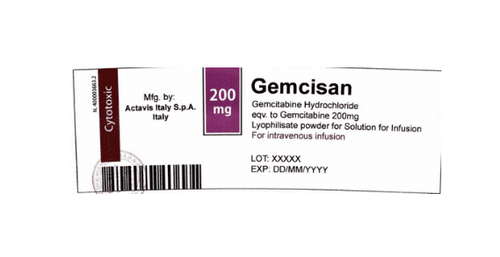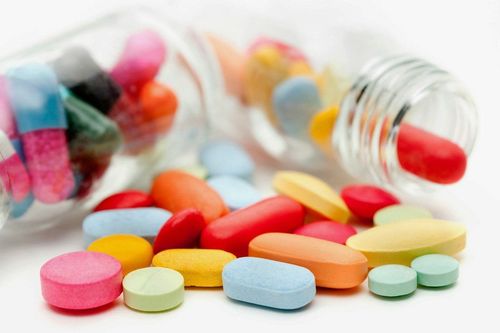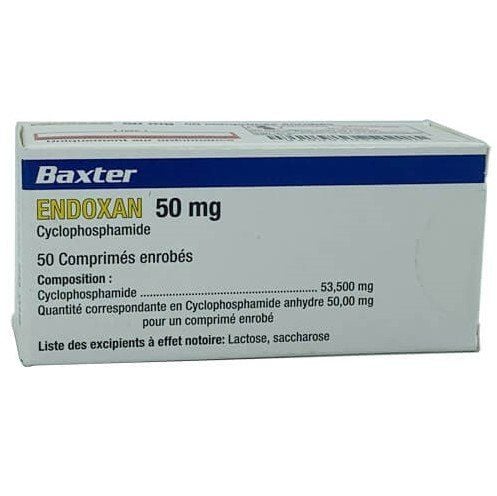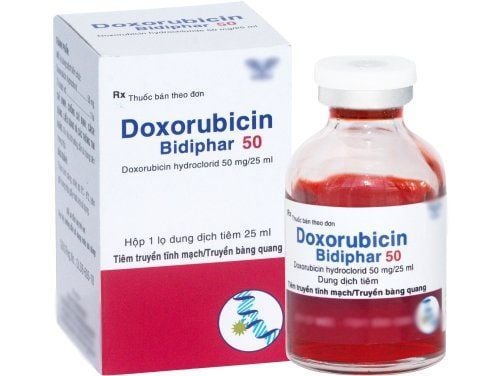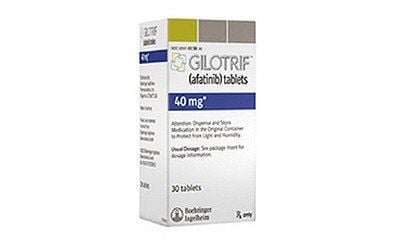This is an automatically translated article.
Bocartin 50 is an anti-cancer drug. When overdosing will appear many toxic manifestations, the most severe is bone marrow failure and hepatotoxicity. So when using Bocartin 50, what should be noted to be effective and safe? Let's learn about Bocartin 50 in this article.
1. What is Bocartin 50?
Carboplatin component in Bocartin 50 has cytotoxic, anticancer and alkylation effects. Carboplatin creates cross-links within the same strand or between 2 strands of the DNA molecule, changing the structure of DNA, thereby inhibiting DNA synthesis. Carboplatin acts nonspecifically on any phase of the cell division cycle.
2. Indications of Bocartin 50mg
Bocartin 50 is indicated in the following cases:
Ovarian cancer (from stage Ic to IV, after surgery, metastasis after treatment, recurrence). Lung cancer (small cell lung cancer or non-small cell lung cancer) Head and neck cancer Wilms' tumor, neuroblastoma, brain tumor Bladder cancer, testicular cancer, retinoblastoma progression and recurrence in children. Do not use Bocartin 50mg in the following cases:
Hypersensitivity to carboplatin, cisplatin or to any of its ingredients, to drugs containing platinum or mannitol Severe renal failure, severe myelosuppression Pregnant women and women who are pregnant Breastfeeding
4. Dosage and usage of Bocartin 50
4.1. Method of injection Bocartin 50mg solution with a concentration of 10 mg/ml can be infused directly or diluted with 5% glucose or 0.9% sodium chloride injection solutions to a concentration of 0.5 mg/ml. Before injecting the drug into the patient, it is necessary to check with the naked eye whether the solution is cloudy or discolored (if so, absolutely do not use). The drug must be injected intravascularly because extravascular injection can cause necrosis. Medicines will be damaged if needles, syringes, catheters, and infusion equipment contain aluminum. Carboplatin is usually given intravenously over 15 minutes or longer or can be given as a continuous infusion over 24 hours. 4.2. Dosage The dosage of Bocartin should be based on clinical response, tolerability and toxicity, in order to achieve optimal therapeutic results with minimal adverse effects. The starting dose should be based on body mass and renal function.
Usual dose: 300 - 450 mg/m2. Or the dose can be calculated using the following formula (Chatelut formula):
Total dose (mg) = Clcarboplatin (ml/min) x target AUC (mg/ml/min)
Where, Clcarboplatin is calculated as follows:
For men: Cl carboplatin (ml/min) = (0.134 x p) + 218 x P (1 - 0.00457 x T) : Cr For women: Cl carboplatin (ml/min) = (0.134 x P) + 0.686 x (218 x P x (1 - 0.00457 x T)) : Cr Where: P is weight (kg)
T is patient age (years) Cr is serum creatinine concentration (μmol/liter) AUC Target is usually 5 to 7 mg/ml/min depending on previous treatment and combination drugs or radiation. When Bocartin 50 mg is used alone, this value is 5 (4 - 6) mg/ml/min if prior chemotherapy has been used and 7 (6 - 8) mg/ml/min if chemotherapy has not been used before. Whether.
Note: The dose calculated according to the above formula is in mg, not mg/m2. Do not use this formula to calculate the dose for dialysis patients or children.
Total high doses can be given up to 1600 mg/m2 in divided doses over several days, used in high-dose chemotherapy in combination with stem cell infusion.
Repeat dose should be after at least 4 weeks and only when hematological parameters have recovered to an acceptable level. It is necessary to have facilities ready to handle possible complications when administering drugs.
When co-administering with other drugs, there must be a specific regimen of the dosage of each drug and the sequence of taking specific drugs.
Ovarian cancer: Advanced ovarian cancer (stage III - IV) (need in combination with other drugs such as cyclophosphamide). For adults, the starting dose is 300 mg/m2. The dose for the next dose should be at least 4 weeks apart from the previous one and adjusted according to the decrease in platelets in the previous treatment, and only when the blood cells have returned to acceptable limits. In addition, the dose of carboplatin must be calculated based on renal function. A total of 6 treatments. For the treatment of recurrent ovarian cancer, if carboplatin is used alone, the initial dose is 360 mg/m2, at least 4 weeks apart, depending on whether the hematologic toxicity recovers quickly or slowly). Resume carboplatin only if the platelet count has returned to acceptable limits. Adjust dose according to the degree of decrease in platelet count during previous administration. If hematologic toxicity is not significant (platelets above 100000/mm3 and WBCs above 2000/mm3 in previous administration, this time the dose of carboplatin should be increased to 25% whether carboplatin is used alone or in combination. If blood toxicity is mild to moderate (platelets 50000 - 100000/mm3 and neutrophils 500 - 2000/mm3), the next dose should be equal to the previous dose. 50000/mm3 and neutrophils less than 500/mm3) in the previous dose, reduce the dose by 25% this time.If after 2 dose reductions, the dose is only 50% of the original dose and still has moderate to severe reduction in platelets. , consider swapping carboplatin for cisplatin, because cisplatin has lower bone marrow toxicity than carboplatin Other cancers (indications section): The dose of carboplatin used in the treatment of other cancers is similar to that of carboplatin. Dosage for use in ovarian cancer Bocartin 50 dose for patients with renal impairment is adjusted according to creatinine clearance Patients with creatinine clearance below 60 ml/min carries a high risk of myelosuppression, so dose reduction is required. Creatinine clearance 41 - 59 ml/min: starting dose is 250 mg/m2 Creatinine clearance 16 - 40 ml/min, starting dose is 200 mg/m2. Subsequent doses should be adjusted according to tolerability, response to therapy, and degree of myelosuppression. For children: No special dose is recommended for this population.
5. Undesirable effects of the drug Bocartin 50
Bocartin 50mg drug often causes very serious complications, in which the most important complication is bone marrow failure. This condition is more likely to occur in people with kidney failure or who have previously received anticancer drugs (eg, cisplatin) or radiation therapy. In addition, Bocartin 50 also causes complications on the digestive system, nervous system, eyes, ears and kidneys. The degree of undesirable effects occurring depends on the dose of the drug, how to use the drug alone or in combination, liver function, kidney function and the patient's location.
Common undesirable effects (ADR ratio > 1/100): malaise, fatigue, body pain, weakness, thrombocytopenia, then leukopenia, anemia (70 - 90%), prone to bleeding, nausea and vomiting, abdominal pain, diarrhea, constipation, drug-induced peptic ulcer... Rare and rare, ADR < 1/100: Anaphylaxis, anorexia, increased risk of death mortality in patients with heart failure, but it is not clear whether it is due to carboplatin, cerebrovascular accident, arterial occlusion, uremia syndrome, blood pressure disturbance, hemolysis. The above are the complications when using carboplatin alone. However, the incidence and severity of complications are higher when used in combination with other drugs (eg, with cyclophosphamide in the treatment of advanced ovarian cancer).
6. Notes when using Bocartin 50
Carboplatin is very toxic and has a low therapeutic index. In the absence of toxicity, response to treatment usually does not occur. Therefore, Bocartin 50mg should only be used under the close supervision of an oncologist, and there must be facilities to deal with adverse events caused by anaphylaxis such as oxygen, epinephrine, corticosteroids, antihistamines. ...). Renal function should be closely monitored by creatinine clearance. Do not use Bocartin 50mg if kidney failure is severe. The overdose of Bocartin 50 will cause many toxic manifestations, of which the most severe is myelosuppression and hepatotoxicity, followed by toxicity to kidneys, nerves, digestion and hearing. Currently, there is no specific antidote. When an overdose occurs, the first thing to do is to stop the drug and treat it symptomatically. Hypersensitivity reactions (e.g. facial edema, bronchospasm, hypotension, tachycardia) should be managed with intravenous epinephrine, corticosteroids, antihistamines. In the case of bone marrow failure, a blood transfusion, or a separate transfusion of platelets and red blood cells, and the use of drugs that stimulate white blood cell flow. For the elderly (over 65 years old), Bocartin 50 is more likely to cause neurotoxicity, causing peripheral neuropathy, marrow failure, and kidney failure than young people. In case Bocartin 50 gets on the skin, wash the affected area quickly with soap and water. If the drug gets on the mucous membranes, immediately wash several times with large amounts of water. If the drug is spilled, the infected area should be limited. Wear 2 pairs of rubber gloves and full protection. When the drug is on the floor, it is necessary to limit the spread of the drug by immediately covering the parking area with an absorbent substance such as paper towels or absorbent particles. Alternatively, it can be treated with 5% sodium hypochloride solution. Mixing materials and items contaminated with Bocartin 50 must be placed in double plastic bags and incinerated at 1100°C.
7. Drug interactions
Bocartin 50 should not be used with the following drugs:
Drugs that cause bone marrow depression and radiation therapy: When combined, it will increase blood toxicity. Aminoglycoside: Co-administration of aminoglycoside antibiotics with Bocartin 50 will increase nephrotoxicity and hearing loss. Furosemide, ifosfamide: Co-administration of this drug with Bocartin 50 increases the risk of hearing loss, especially in children. Warfarin: Co-administration of warfarin with Bocartin 50 increases the risk of bleeding. Phenytoin: Bocartin 50 reduces the concentration of phenytoin.
Please dial HOTLINE for more information or register for an appointment HERE. Download MyVinmec app to make appointments faster and to manage your bookings easily.




